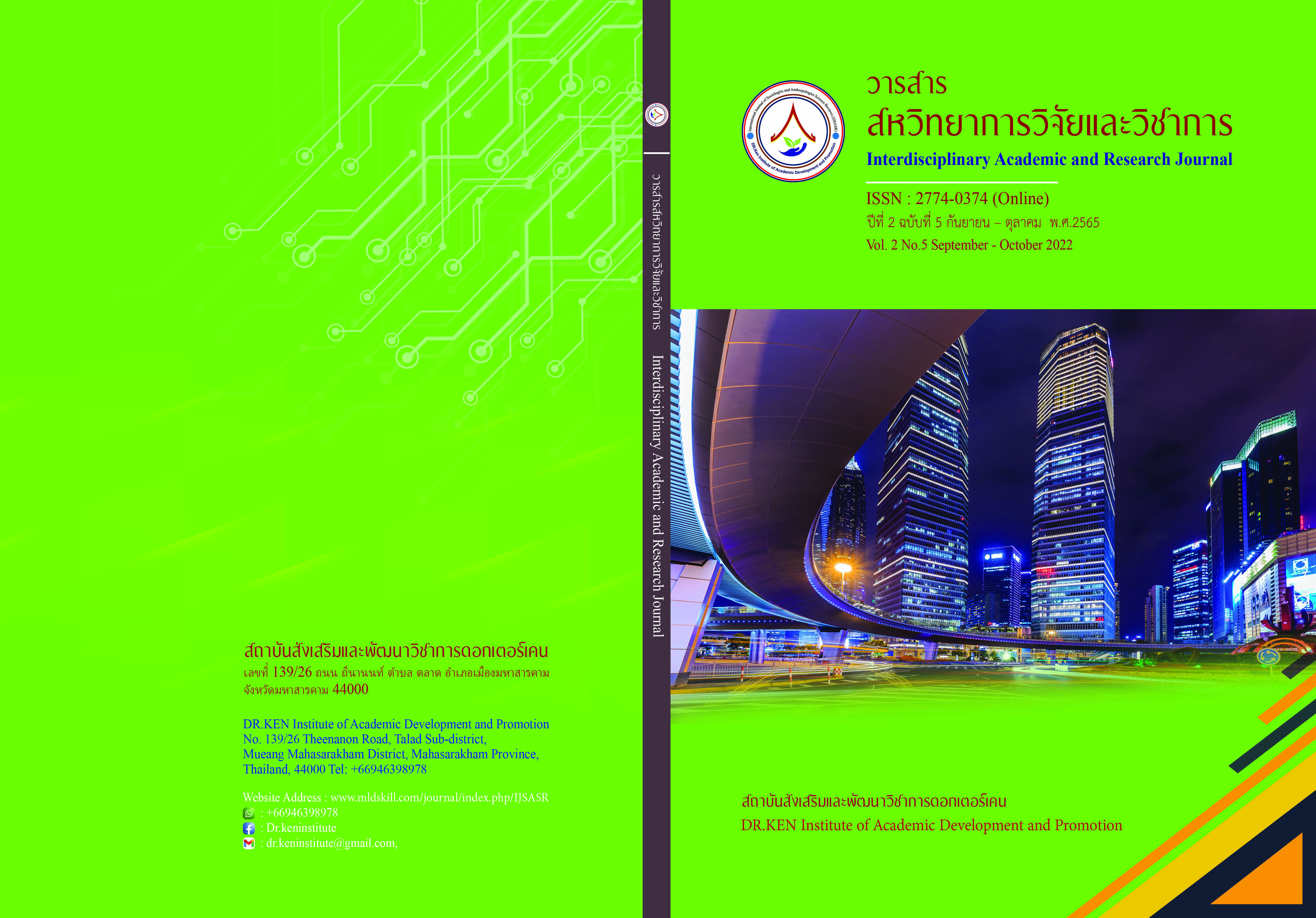White Galingale Cultivation for Promoting Community Economy of Farmers in Tha Maka District, Kanchanaburi Province
DOI:
https://doi.org/10.14456/iarj.2022.109Keywords:
White Galingale; , Community Economy; , Farming; , FarmerAbstract
Kaempferia farming is a traditional production method that is tied to the old traditions of the agricultural community for a long time in the past used to have a traditional farming way of production before being converted to a new production system, taking into account the conformity with Culture and Resource Management When the promotion of commercial cultivation of crops took place, economic objectives resulted in a major change. Thus, in this study, the objectives of this study were to study the conditions and problems of white galingale cultivation, to study the white galingale cultivation of farmers, and to present the guidelines for white galingale cultivation to promote the community economy of farmers. In this study, the cultural qualitative research. The sample group was divided into 2 groups: 1) Key Informant, and 2) Casual Informant by choosing a specific (Purposive Sampling). The methodology was used. The data collection was conducted through interviews, observations, and focus group discussions, and data were analyzed using descriptive statistics. The results reveal that white galingale should be cultivated in an area without flooding to prevent rot of white galingale and weeds must be completely removed during soil preparation. If rhizome rot is found, white galingale must be removed and burned outside the plot. In addition, the problem of low prices during the harvesting season is a major problem for farmers. As for the white galingale cultivation method for promoting the community economy of farmers, white galingale should be cultivated in sandy loam soil in a lightly shaded area. White galingale cultivation is done on a raised bed with fertilizer added to the bottom of the hole. After cultivation, the bed is covered with rice straw about 2 inches thick to retain moisture in the soil. White galingale can be harvested after 6 months of planting. The guidelines for white galingale cultivation for promoting the community economy include building confidence for farmers in selling white galingale, restoring and conserving agricultural resources for balance and sustainability, reducing production and fertilizer costs by making compost and using herbs to get rid of pests, and producing quality and standardized produce. The suggestions are that farmers should follow the weather forecast from the government and monitor the market of white galingale for wider and better distribution of products both in Thailand and abroad.
References
ทรงคุณ จันทจร. (2563). การวิจัยเชิงคุณภาพทางวัฒนธรรม (ภาคปฏิบัติ) . คณะมนุษยศาสตร์และ สังคมศาสตร์ มหาวิทยาลัยราชภัฏมหาสารคาม
ไทยรัฐออนไลน์. (2565). สถานการณ์การระบาดโควิด-19. วันที่ 30 มีนาคม 2565
ประชาชาติธุรกิจออนไลน์. (2564). กระชายขาว-ฟ้าทะลายโจรระส่ำพ่อค้าเหมาเกลี้ยงยกไร่ให้ราคาเพิ่มสามเท่า. 21 กรกฎาคม 2564
มหาวิทยาลัยมหิดล. (2564). แถลงการณ์มหาวิทยาลัยมหิดล เรื่องการอ้างถึงผลงานวิจัยของมหาวิทยาลัยมหิดลเพื่อประกอบการโฆษณาผลิตภัณฑ์เกี่ยวกับสรรพคุณของสารสกัดกระชายขาวในการต้านโรคโควิด-19. ศูนย์ความเป็นเลิศด้านชีววิทยาศาสตร์ มหาวิทยาลัยมหิดล
เสริมสุข พจนการุณ. (2549). ความเป็นไปได้ในการผลิตกระชายดำเชิงพาณิชย์. วารสารวิชาการเกษตร. 24 (3), 263-287.
เสริมสุข พจนาการุณ. (2559). ศึกษาวิเคราะห์ความเป็นไปได้สำหรับการผลิตกระชายเชิงพาณิชย์. วารสารวิชาการเกษตร. 24 (3), 267-269.
Cartledge, Danicl M. (1995). Taming the Mountain: Haman Ecology, Indigenous knowledge, and sustainable resource management in the Doko Gamo society of Ethiopia. Ph.D. Dissertation Florida: University of Florida.
Janpanit, Surasin. (1996). Indigenous Knowledge in Natural Resource Management : the case of Two Villages in Thailand. Master Thesis, Khanate: Khanate University.
Terry, Rambo A. and Percy, E. Sajise. (1984). An Introduction to Human Ecology Research on Agricultural Systems in Southeast Asia. College, Laguna, Philippines: University of Philippines at Los Banos; Honolulu, HI: East – West Center.
Downloads
Published
How to Cite
Issue
Section
License
Copyright (c) 2022 Surachate Watanaponpan, Danwichai Sairuksa, Rungson Singhalert

This work is licensed under a Creative Commons Attribution-NonCommercial-NoDerivatives 4.0 International License.
Copyright on any article in the Interdisciplinary Academic and Research Journal is retained by the author(s) under the under the Creative Commons Attribution-NonCommercial-NoDerivatives 4.0 International License. Permission to use text, content, images, etc. of publication. Any user to read, download, copy, distribute, print, search, or link to the full texts of articles, crawl them for indexing, pass them as data to software, or use them for any other lawful purpose. But do not use it for commercial use or with the intent to benefit any business.
















.png)


